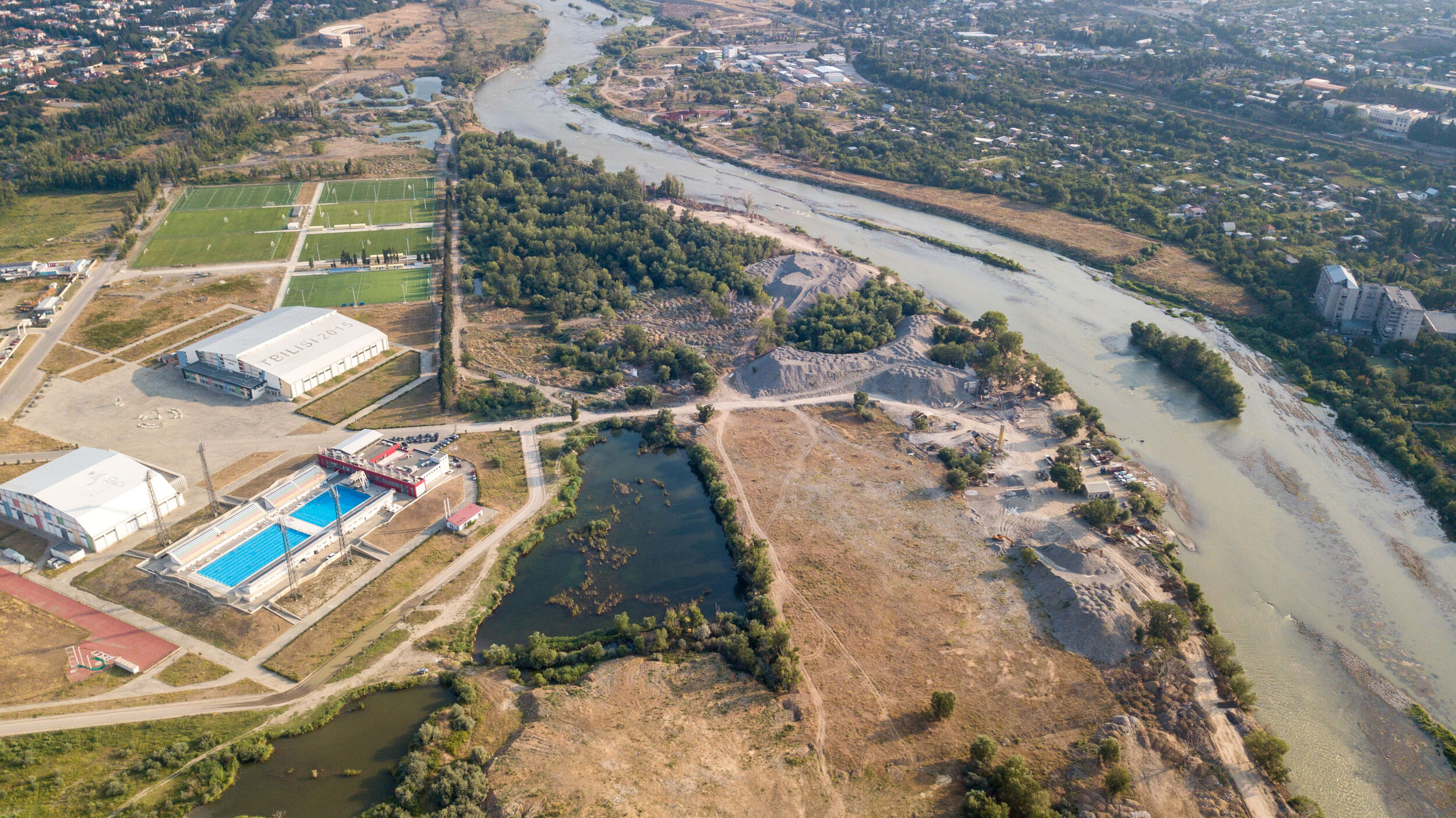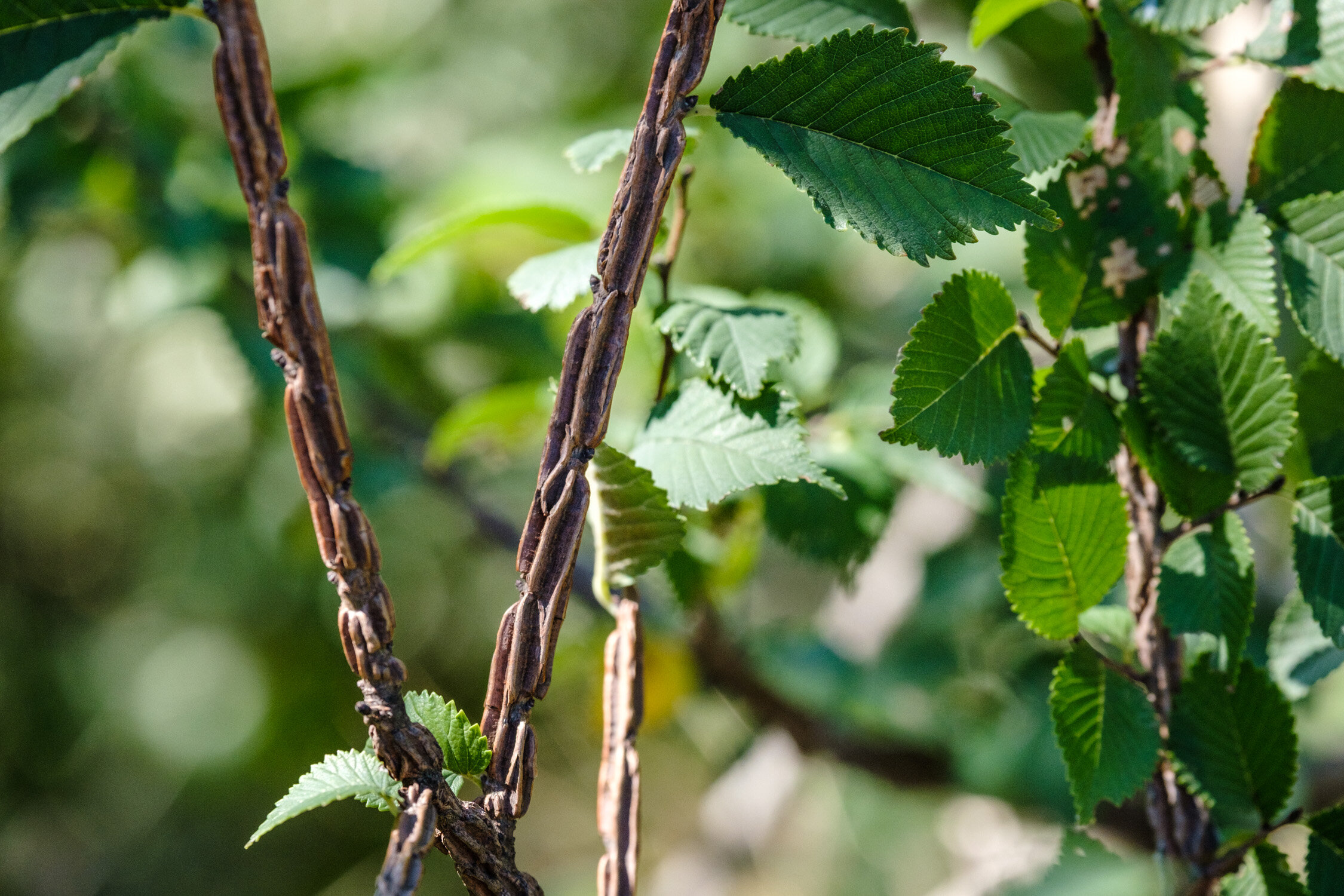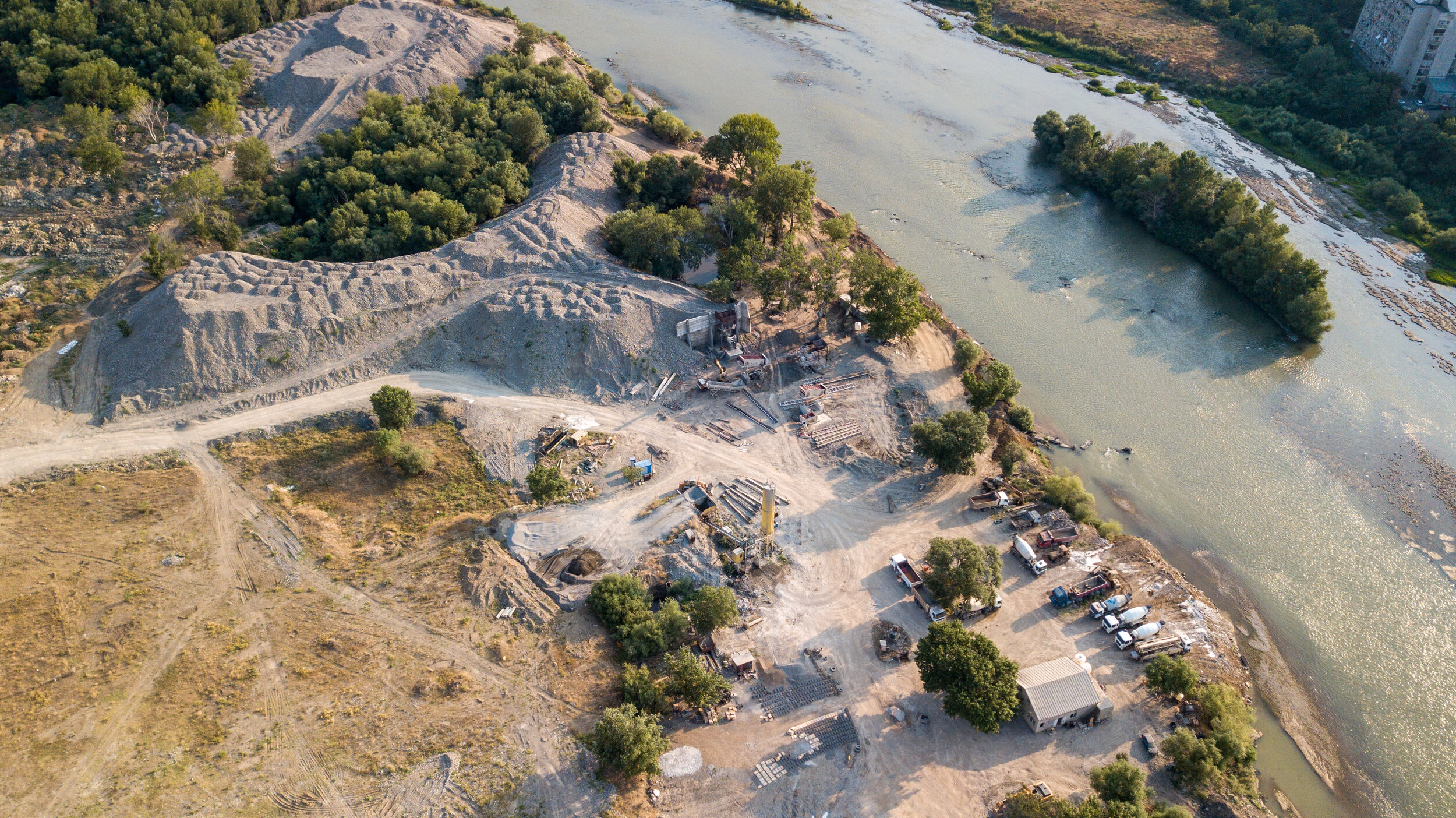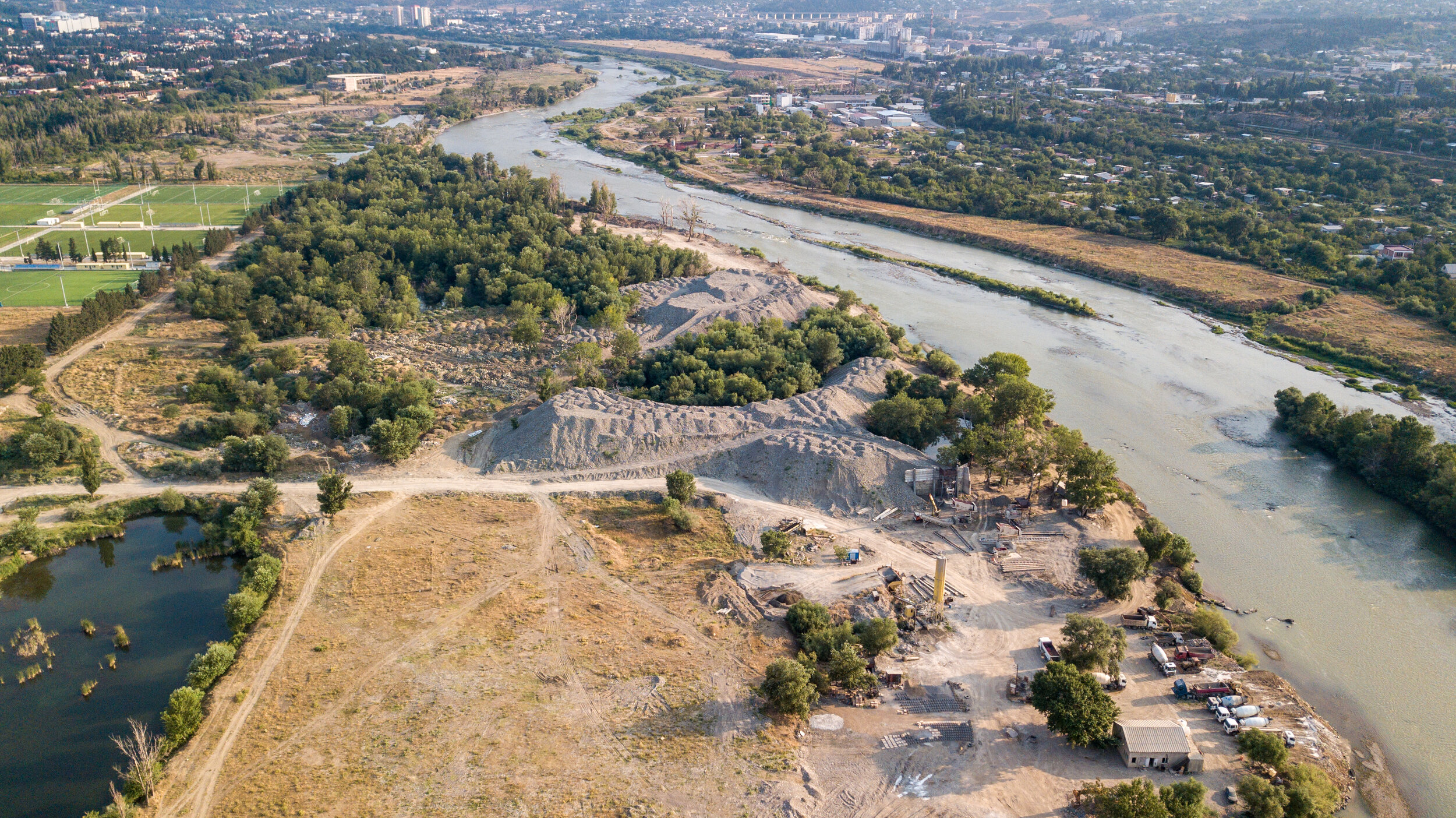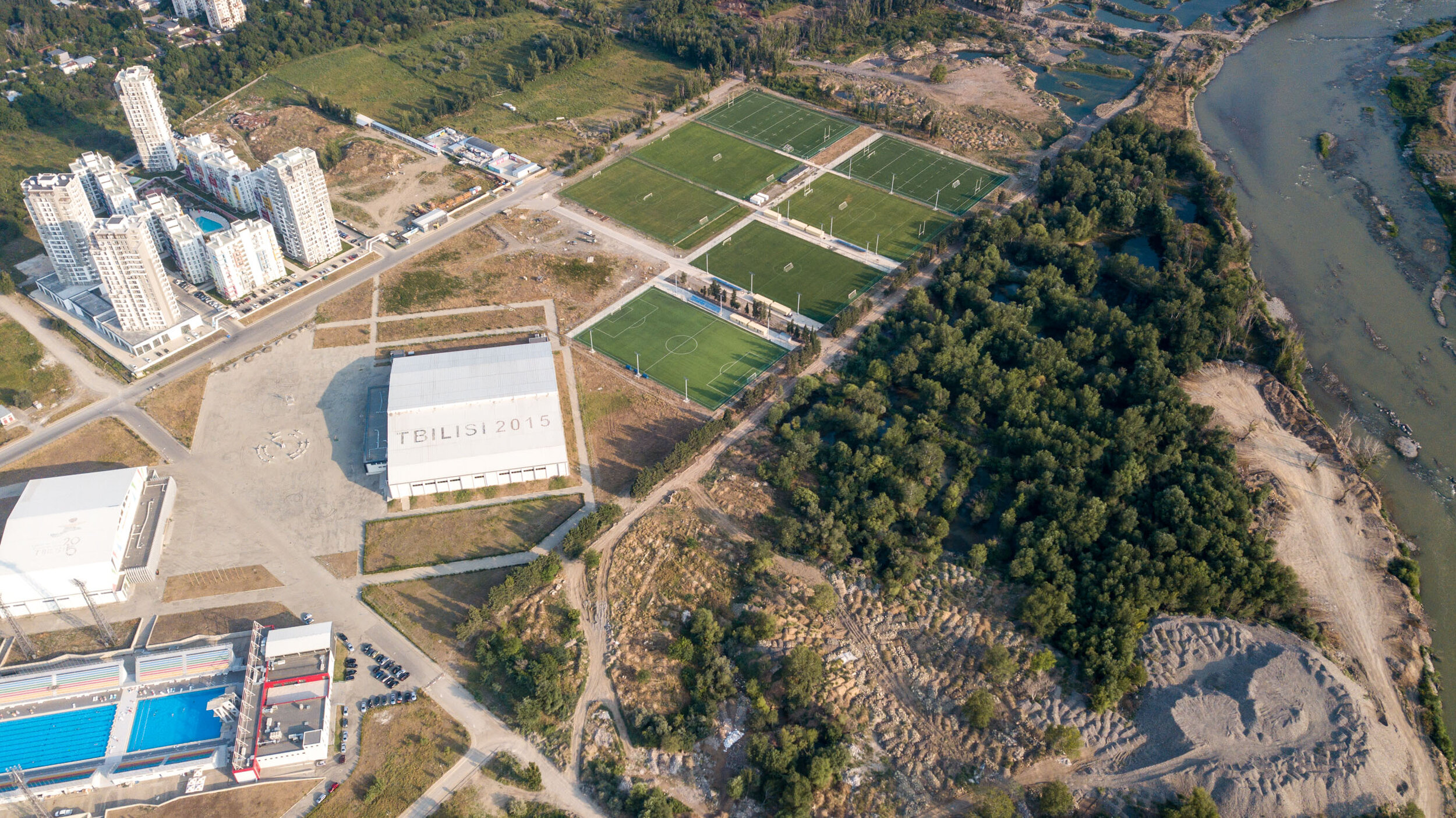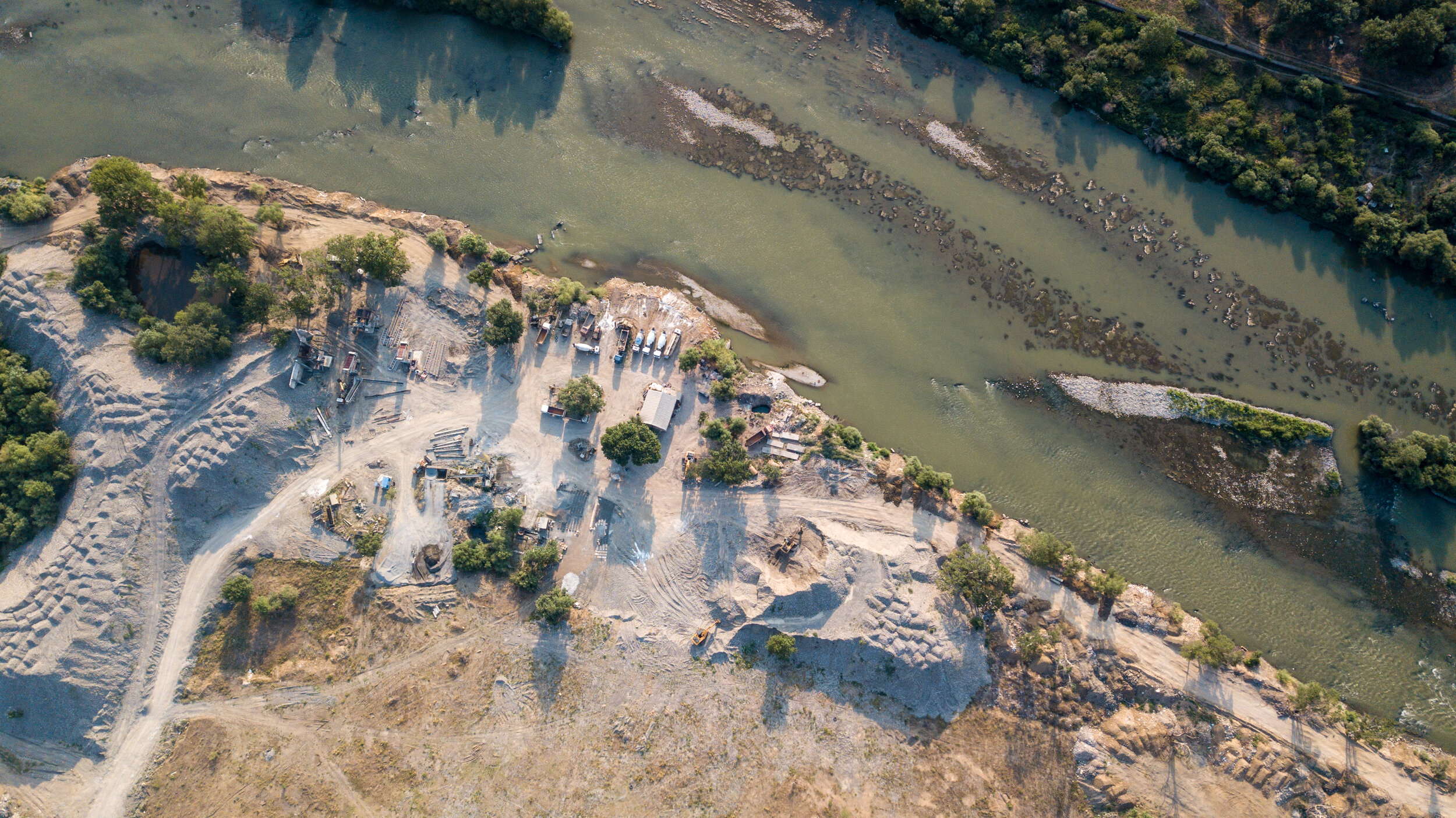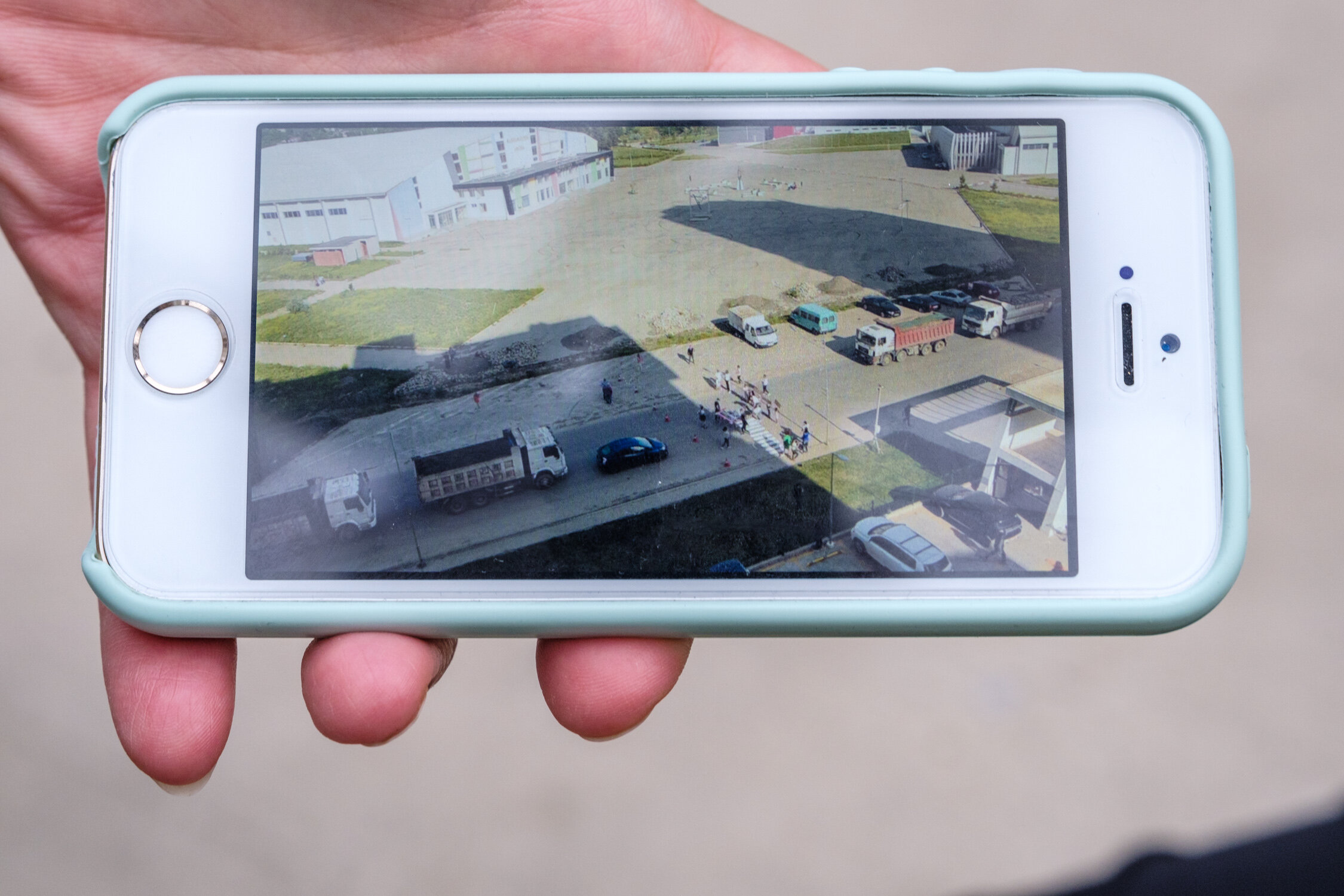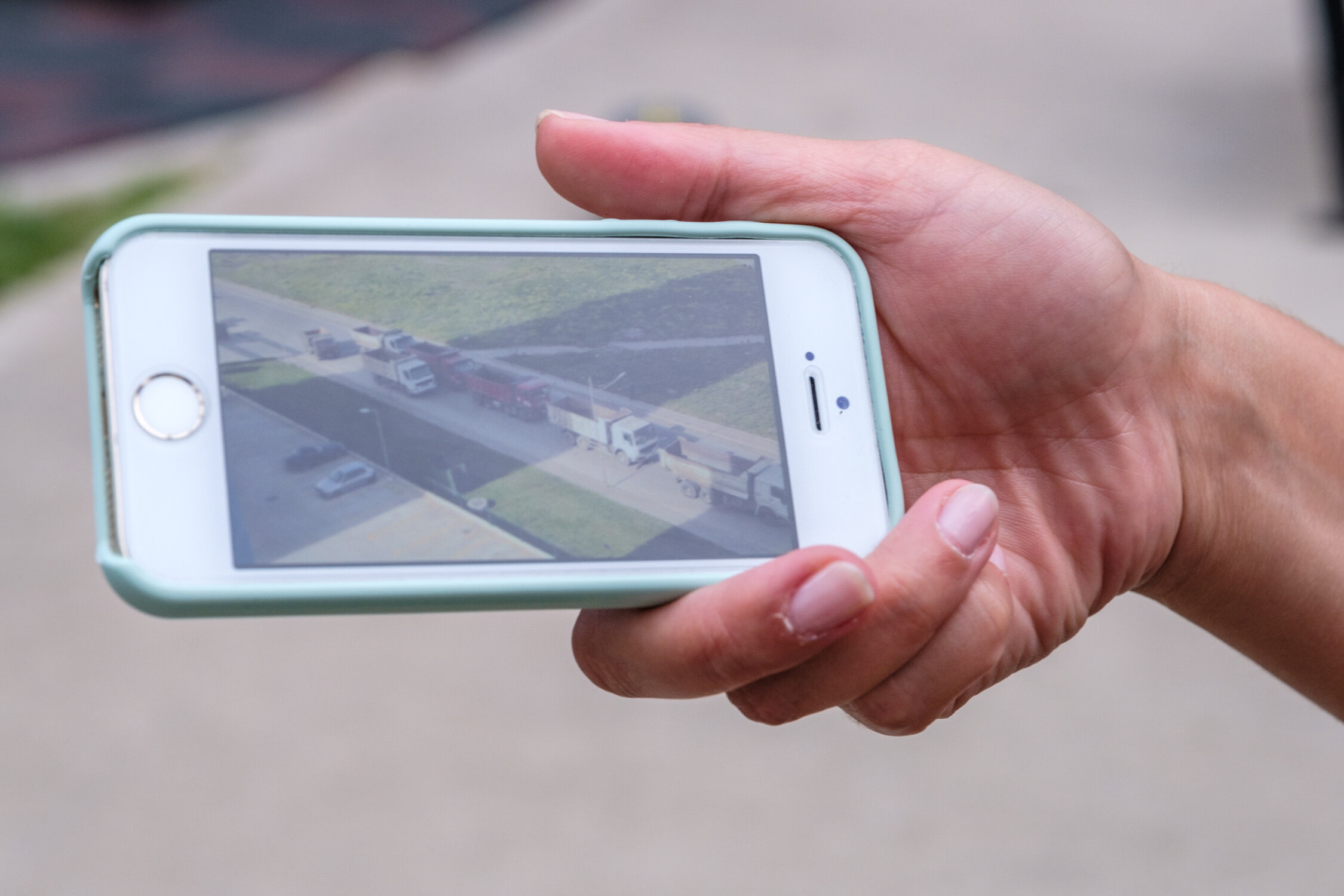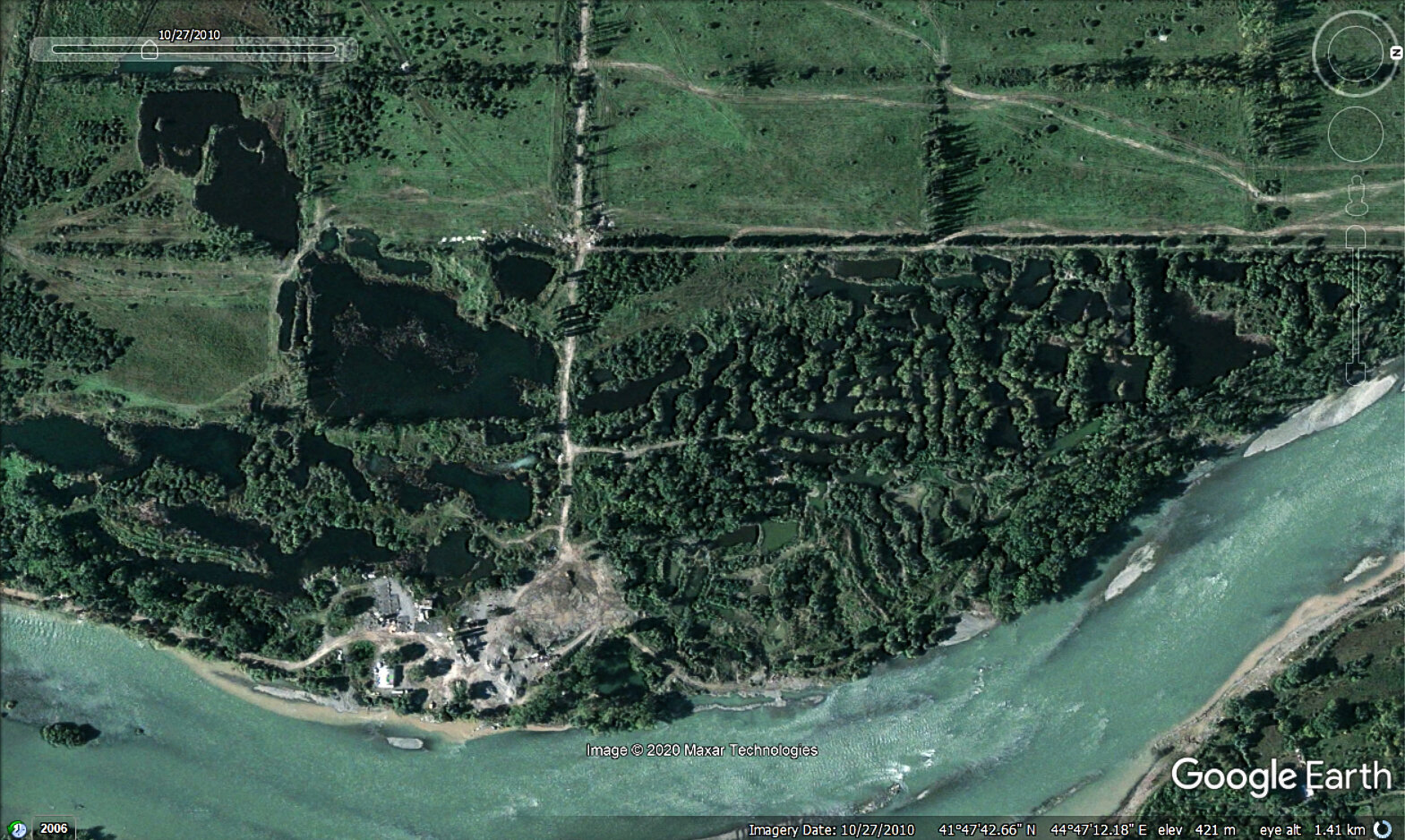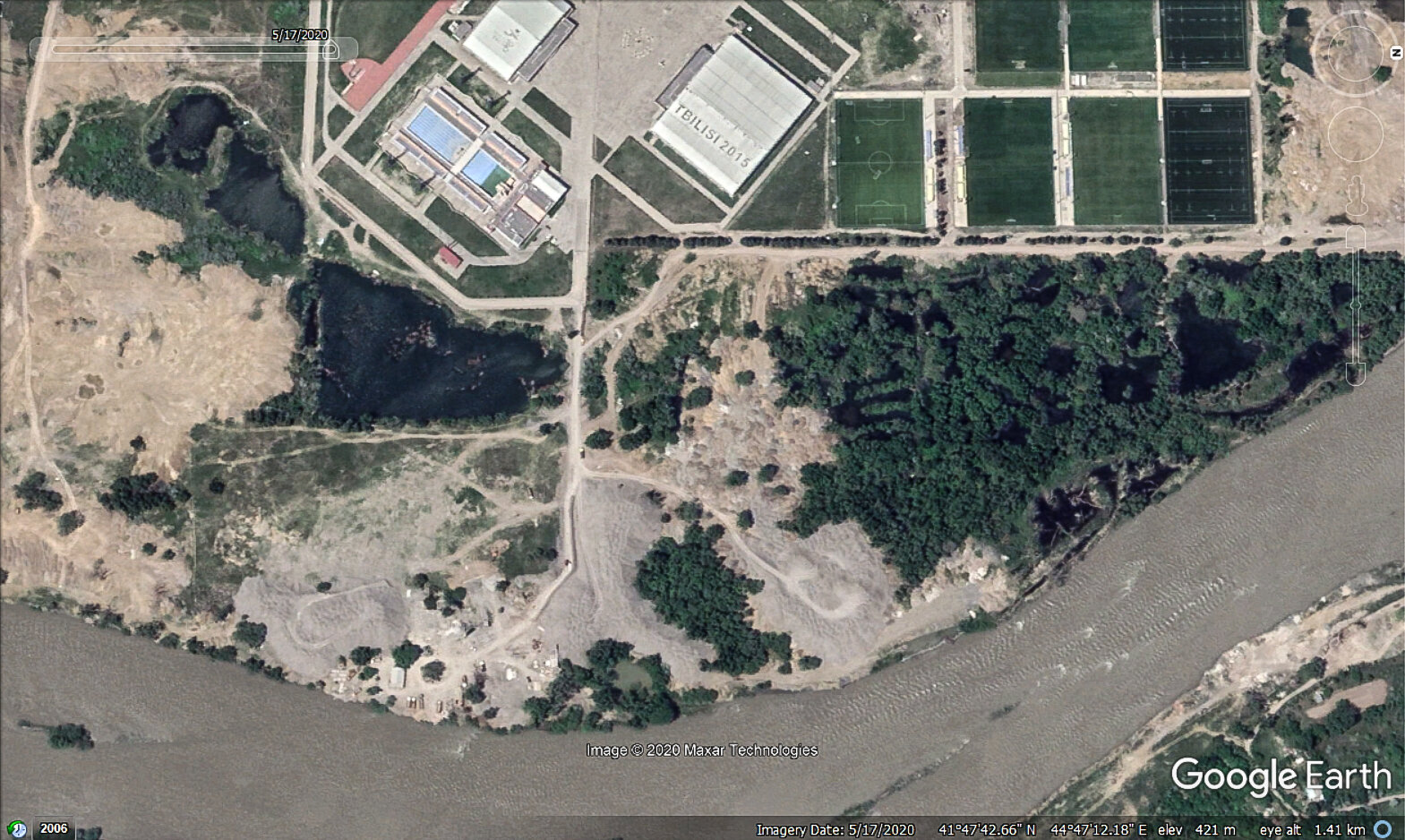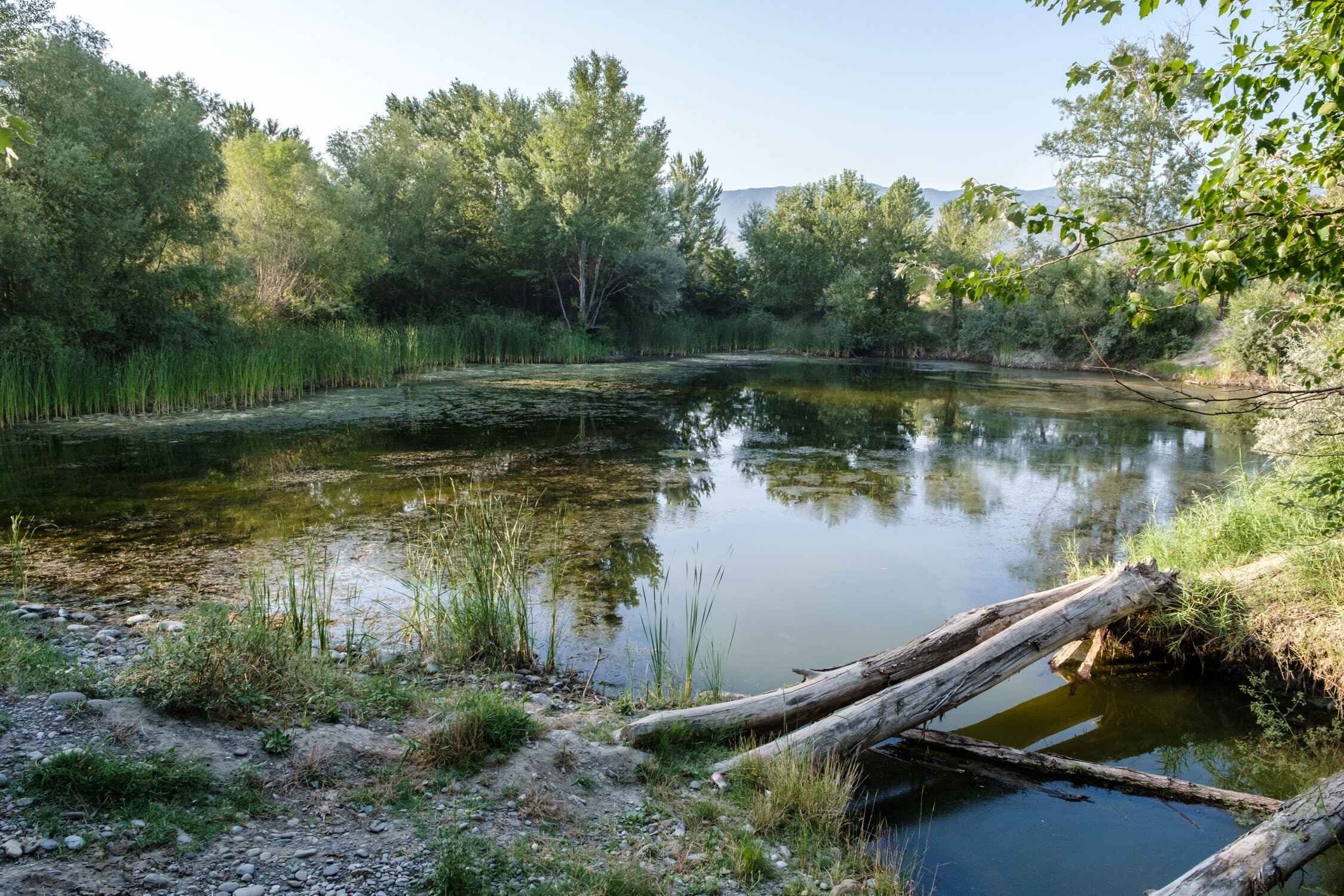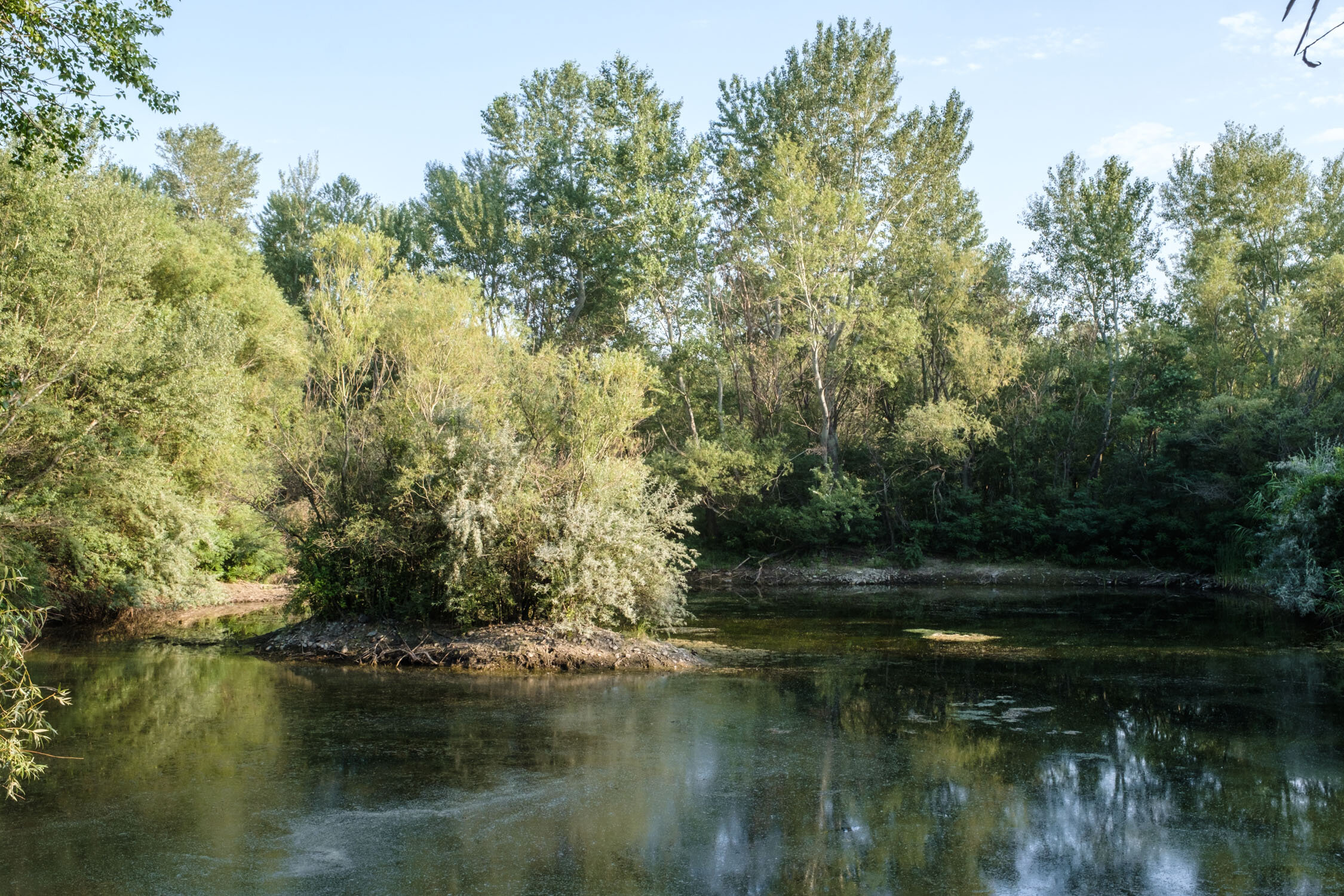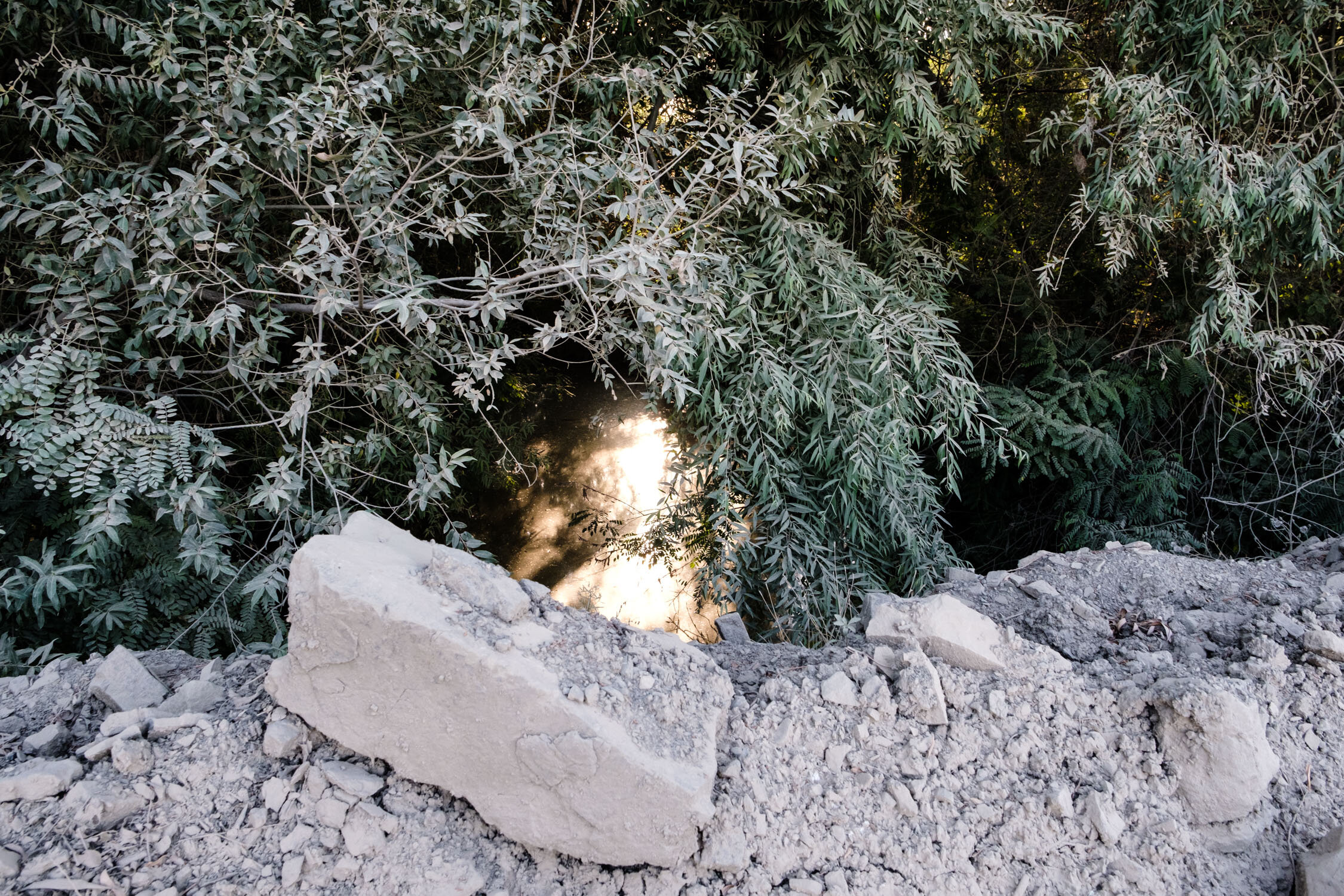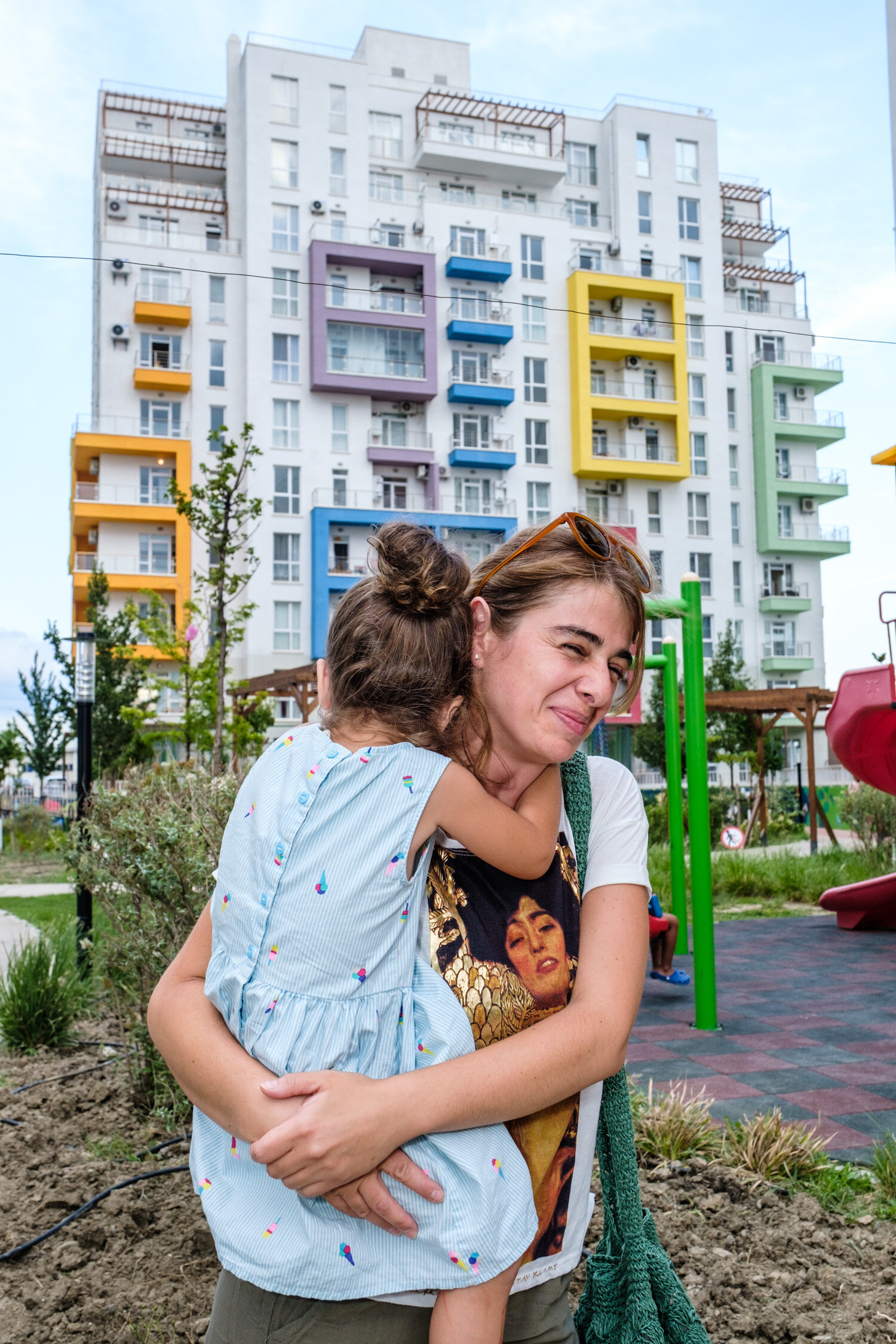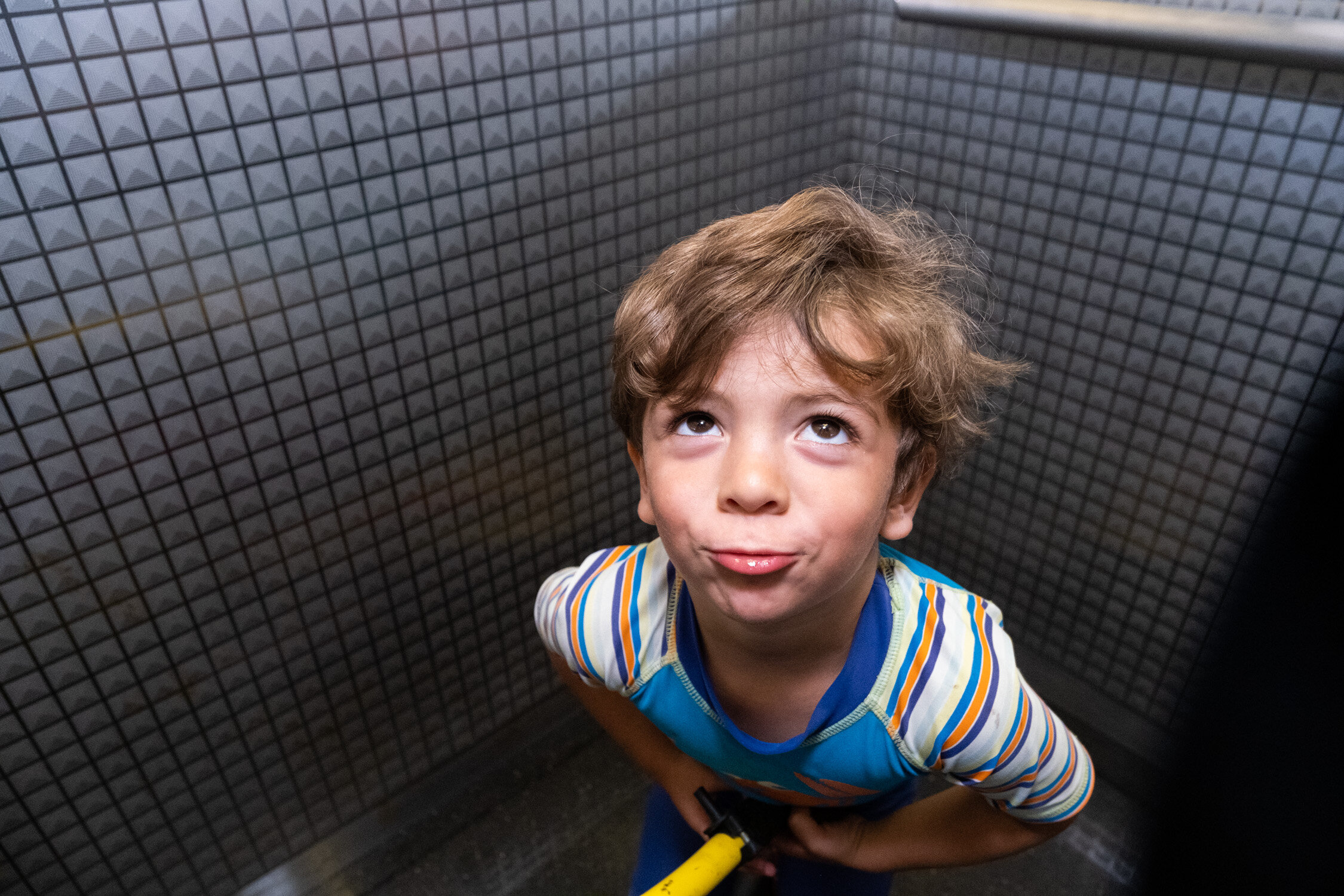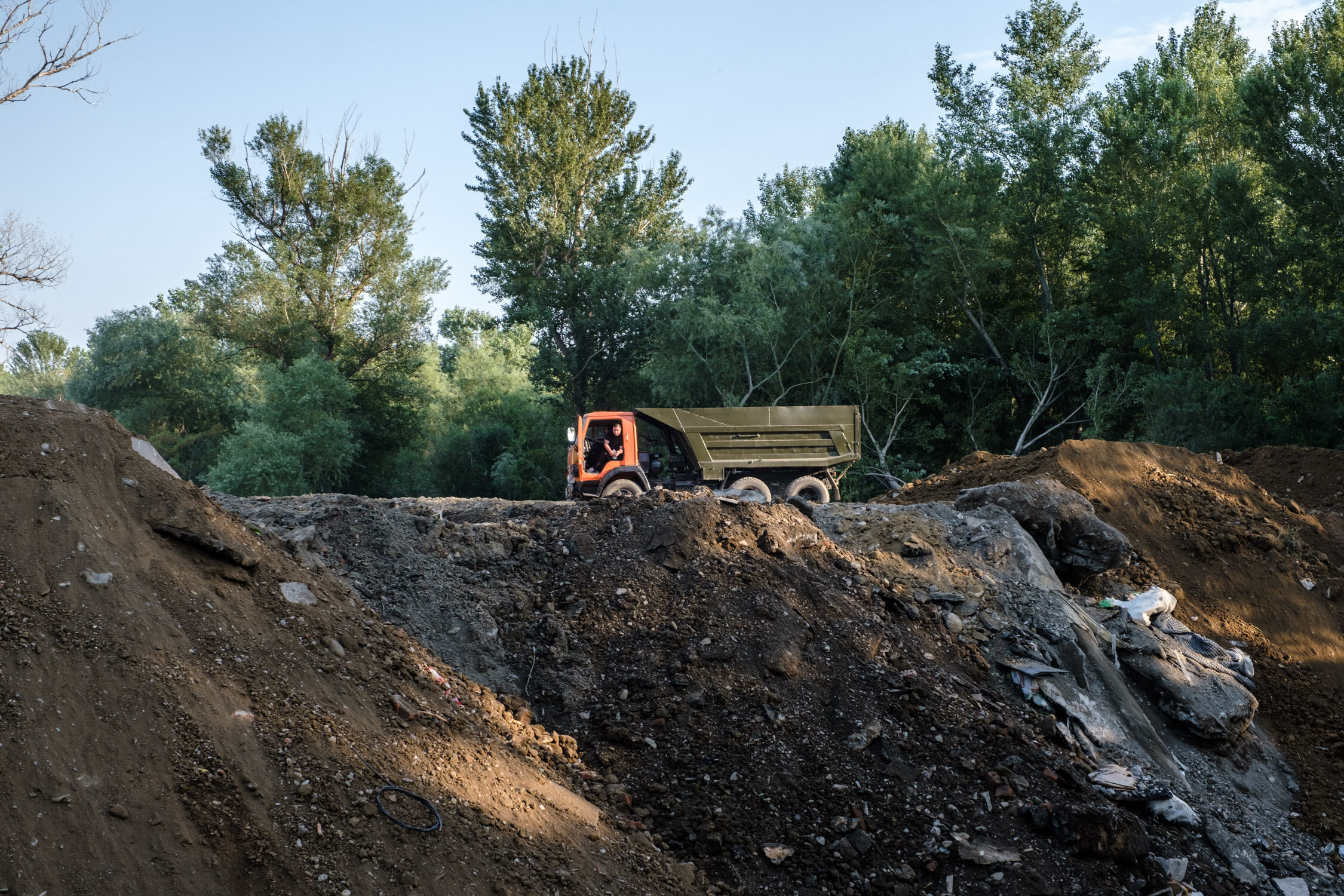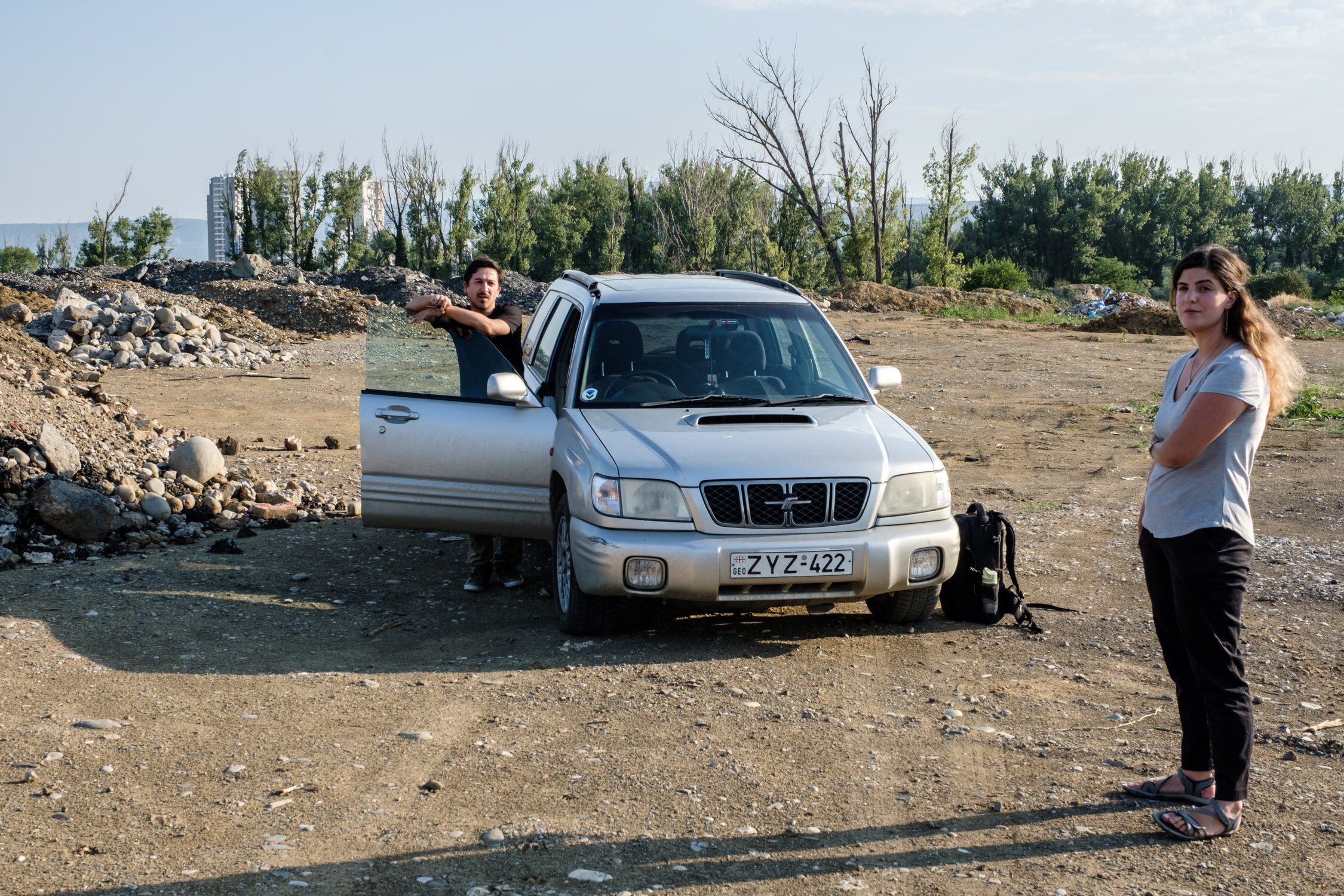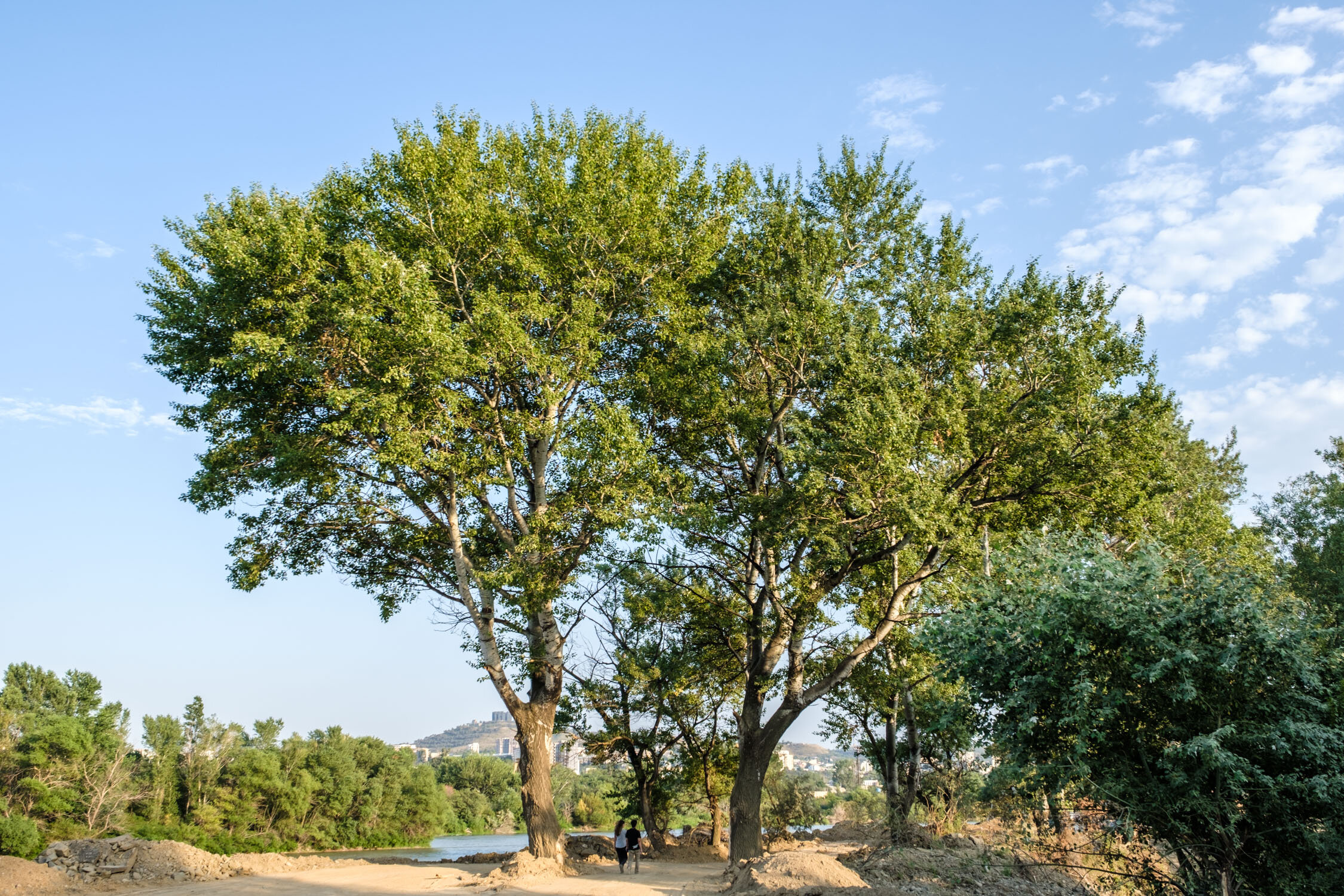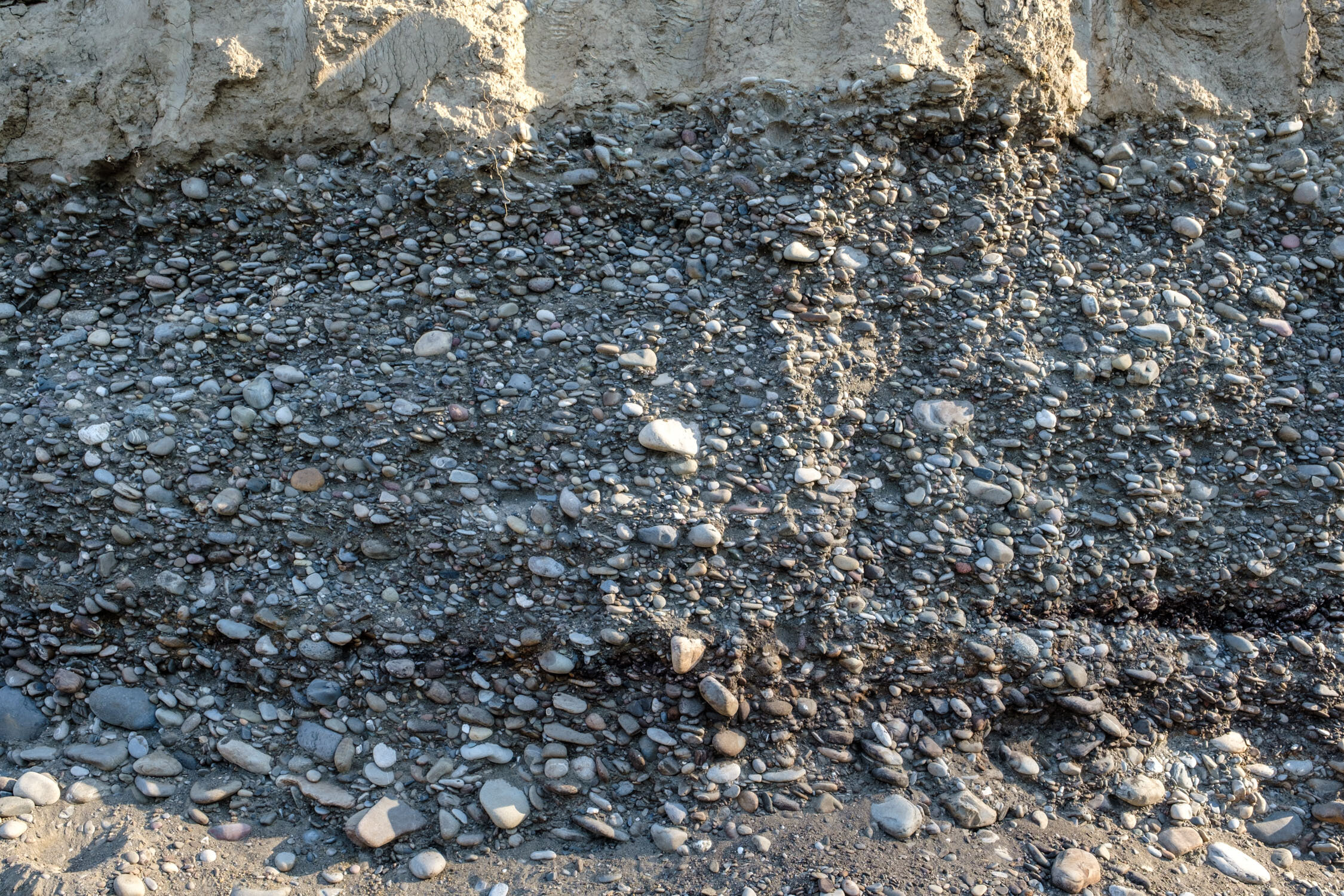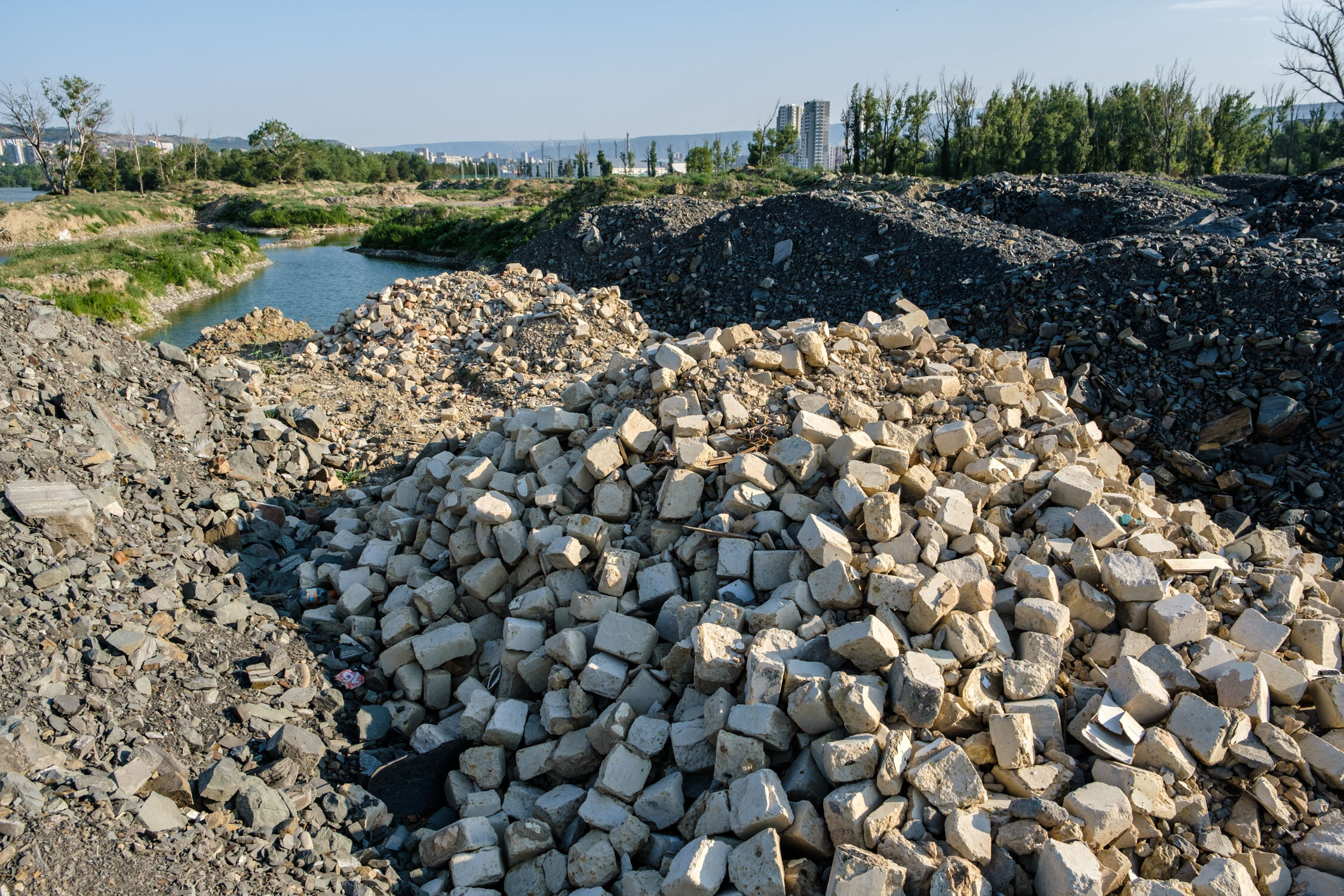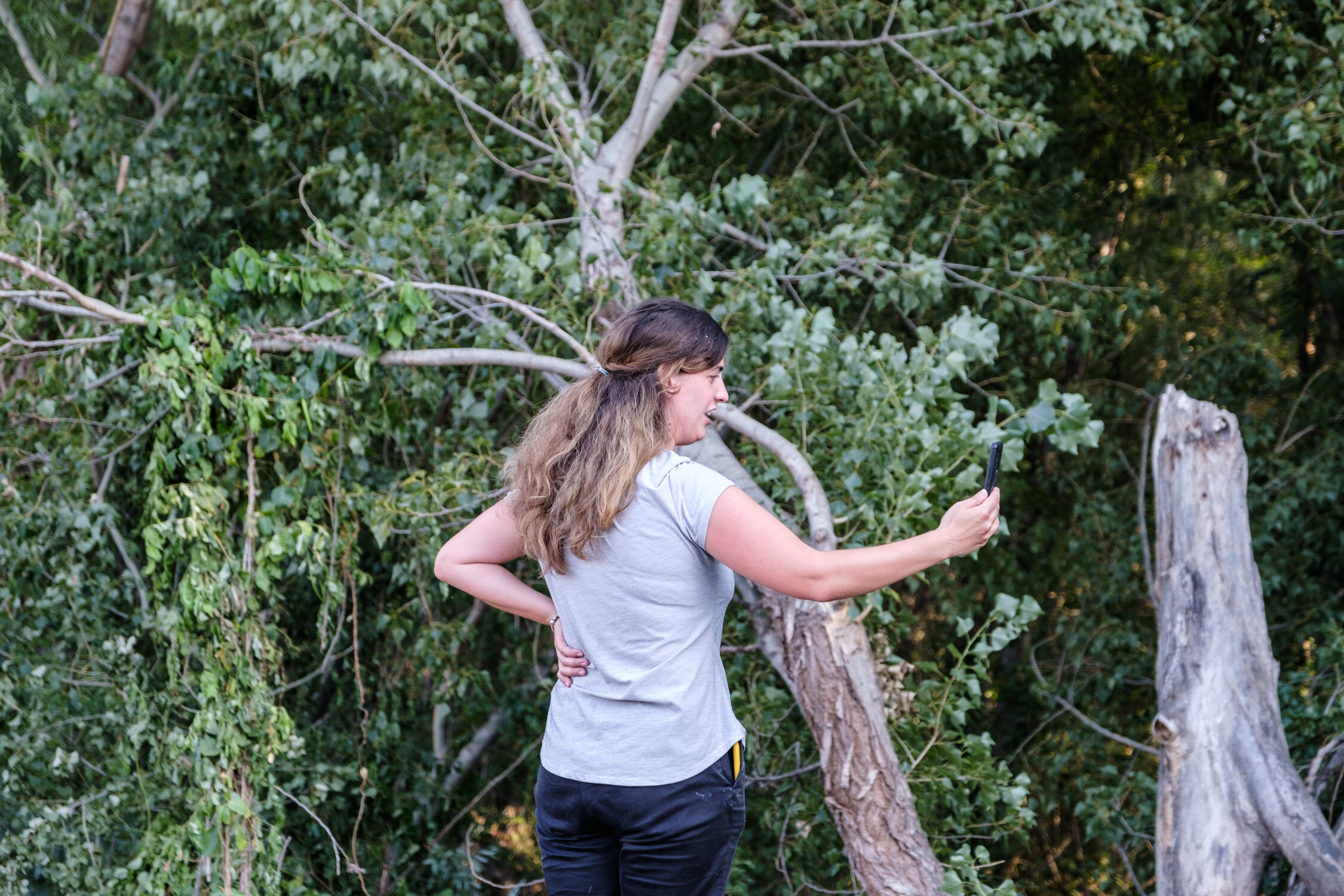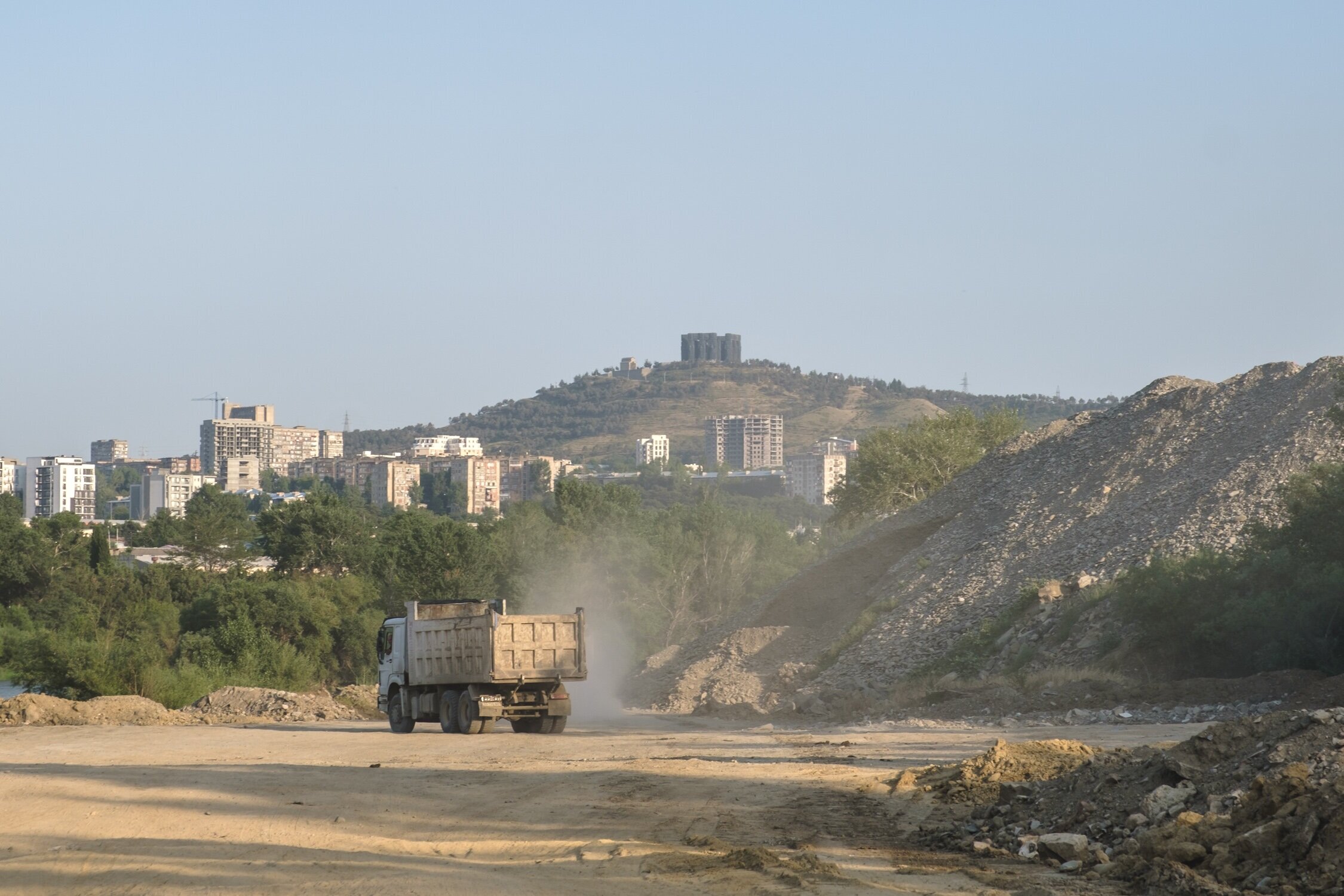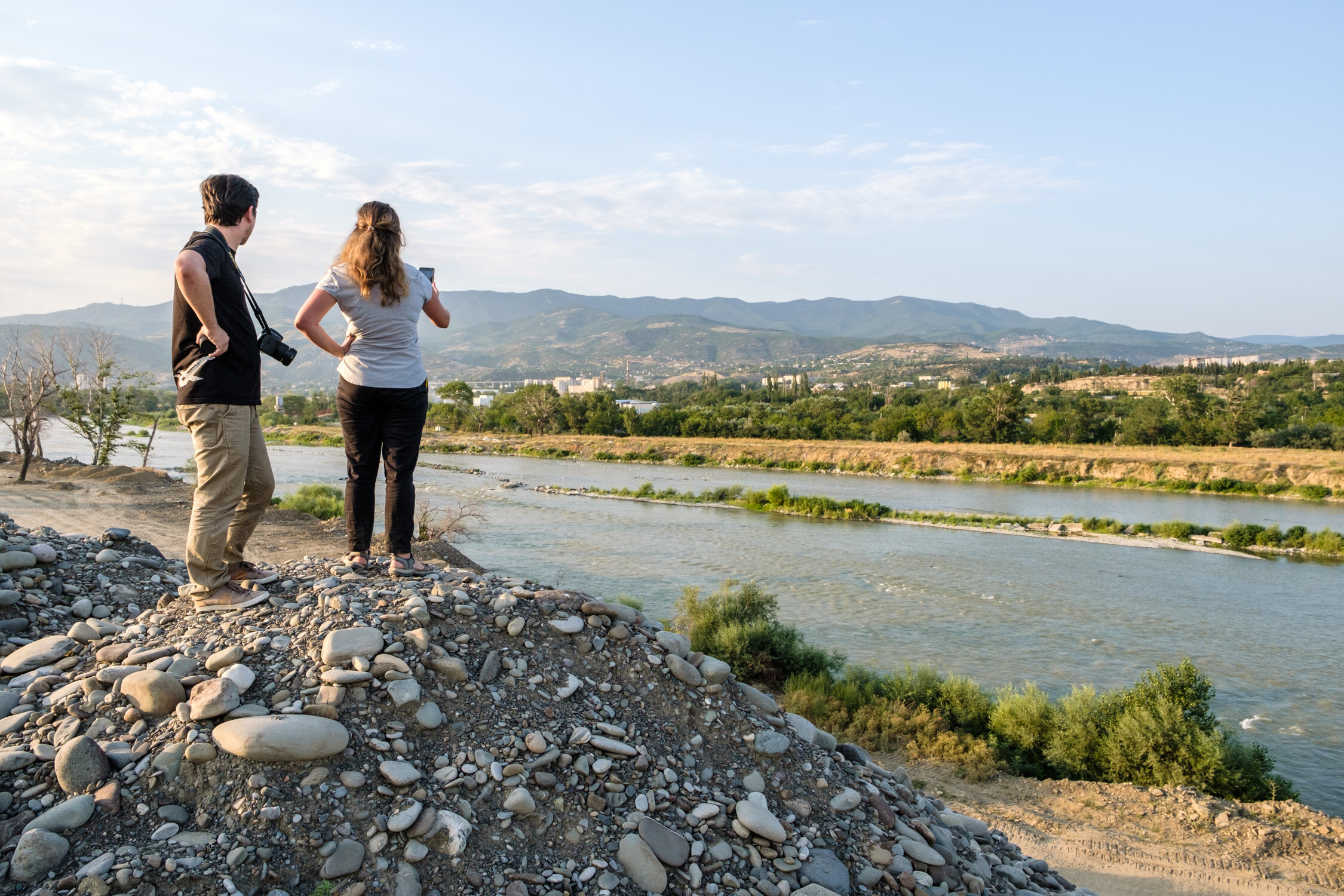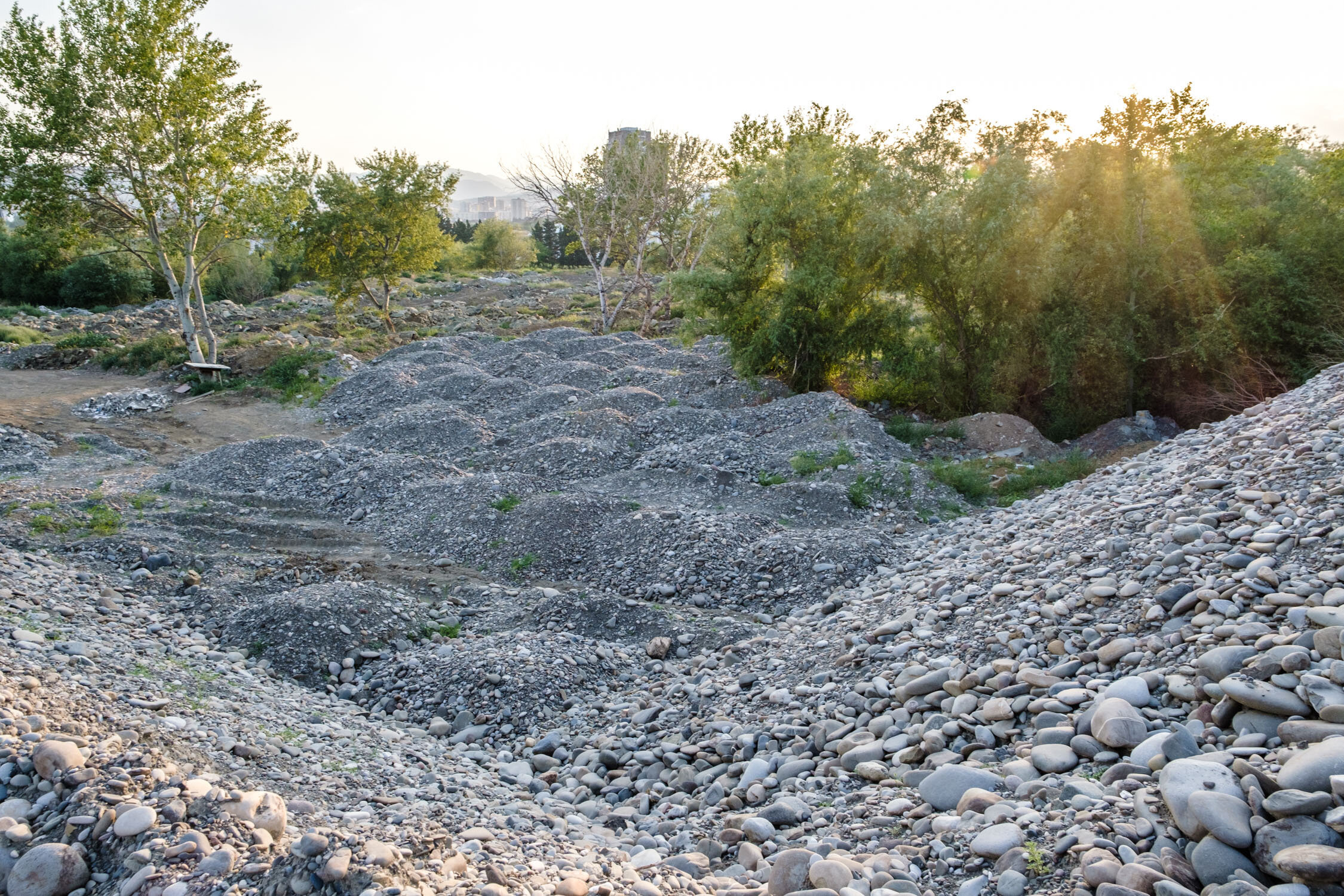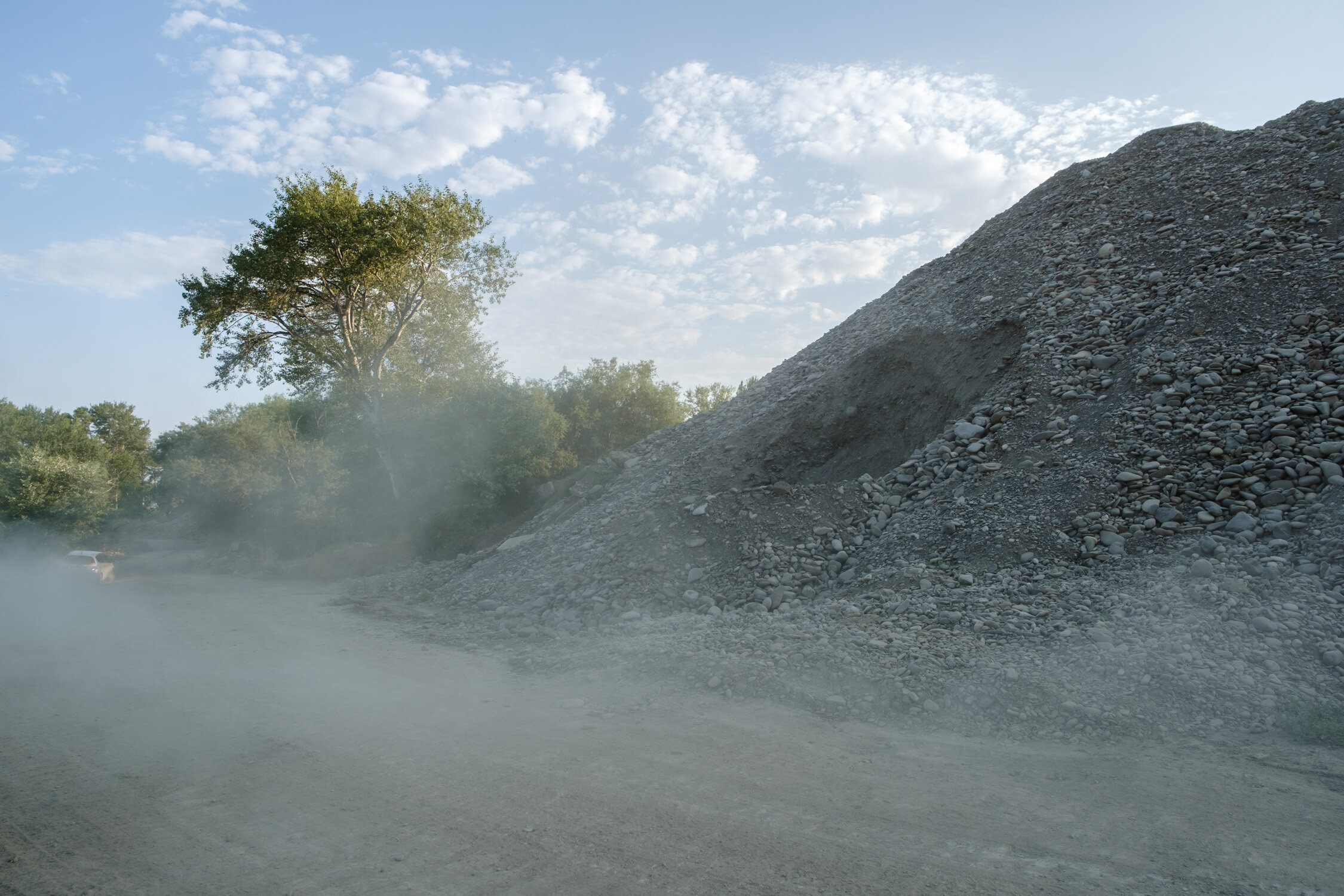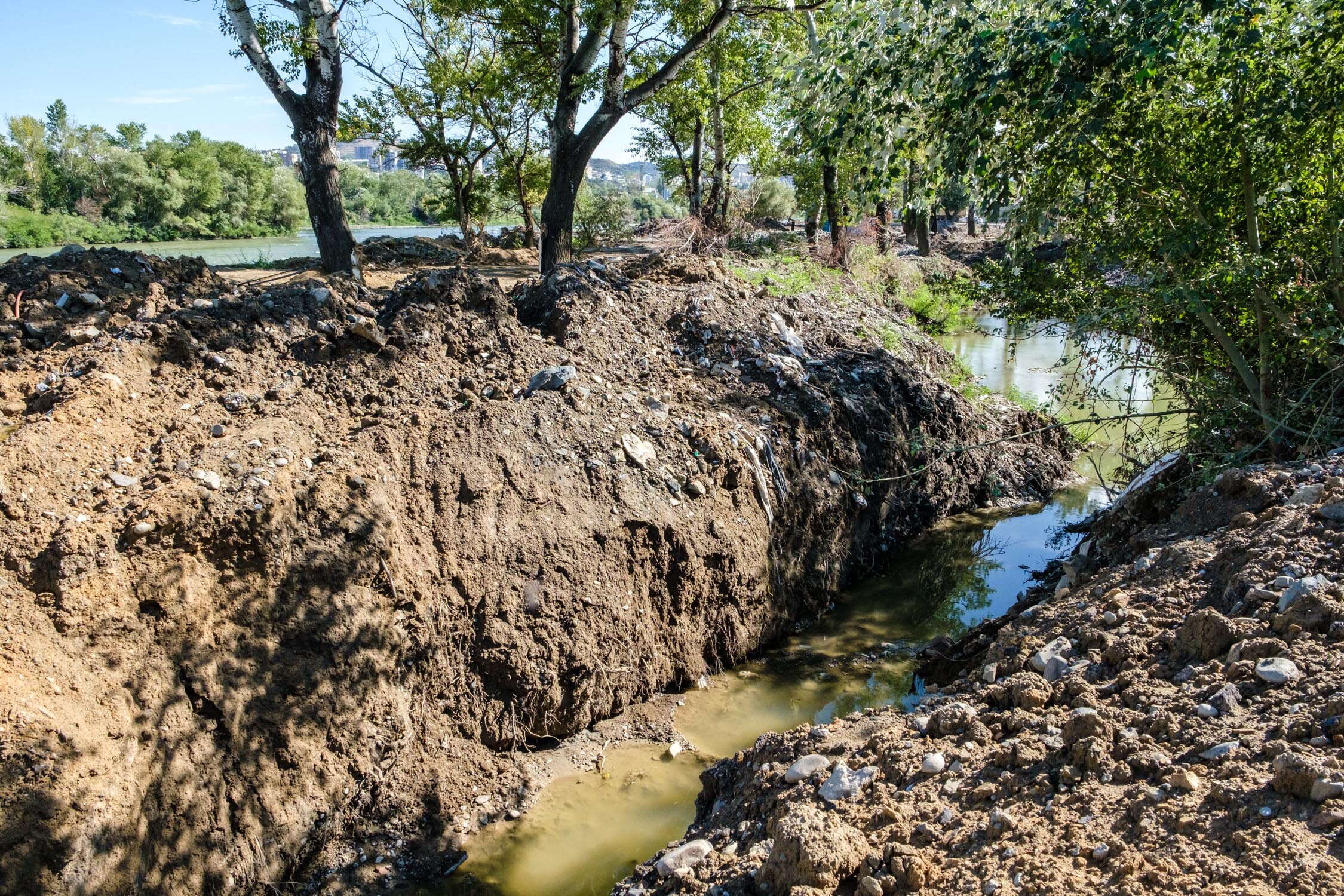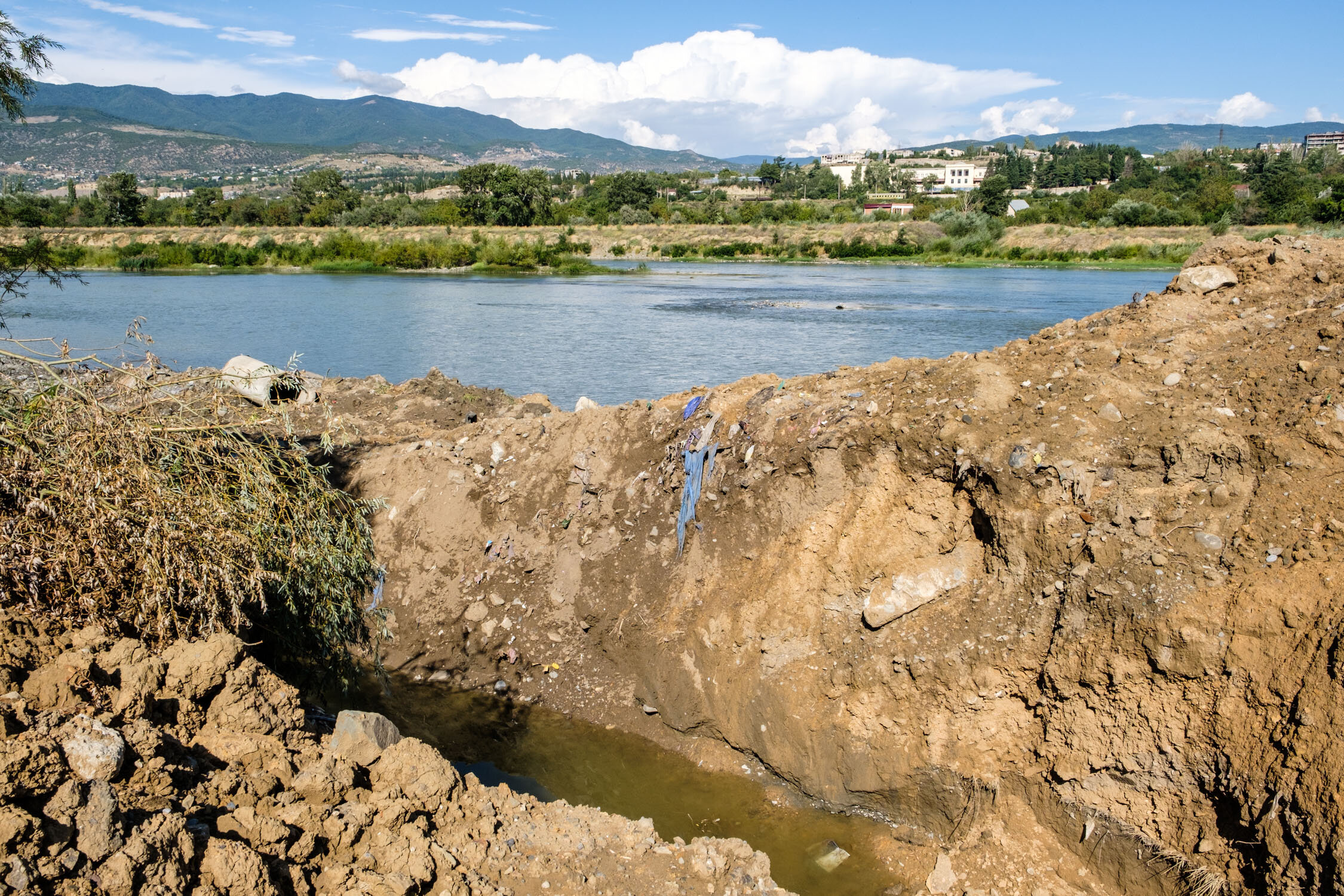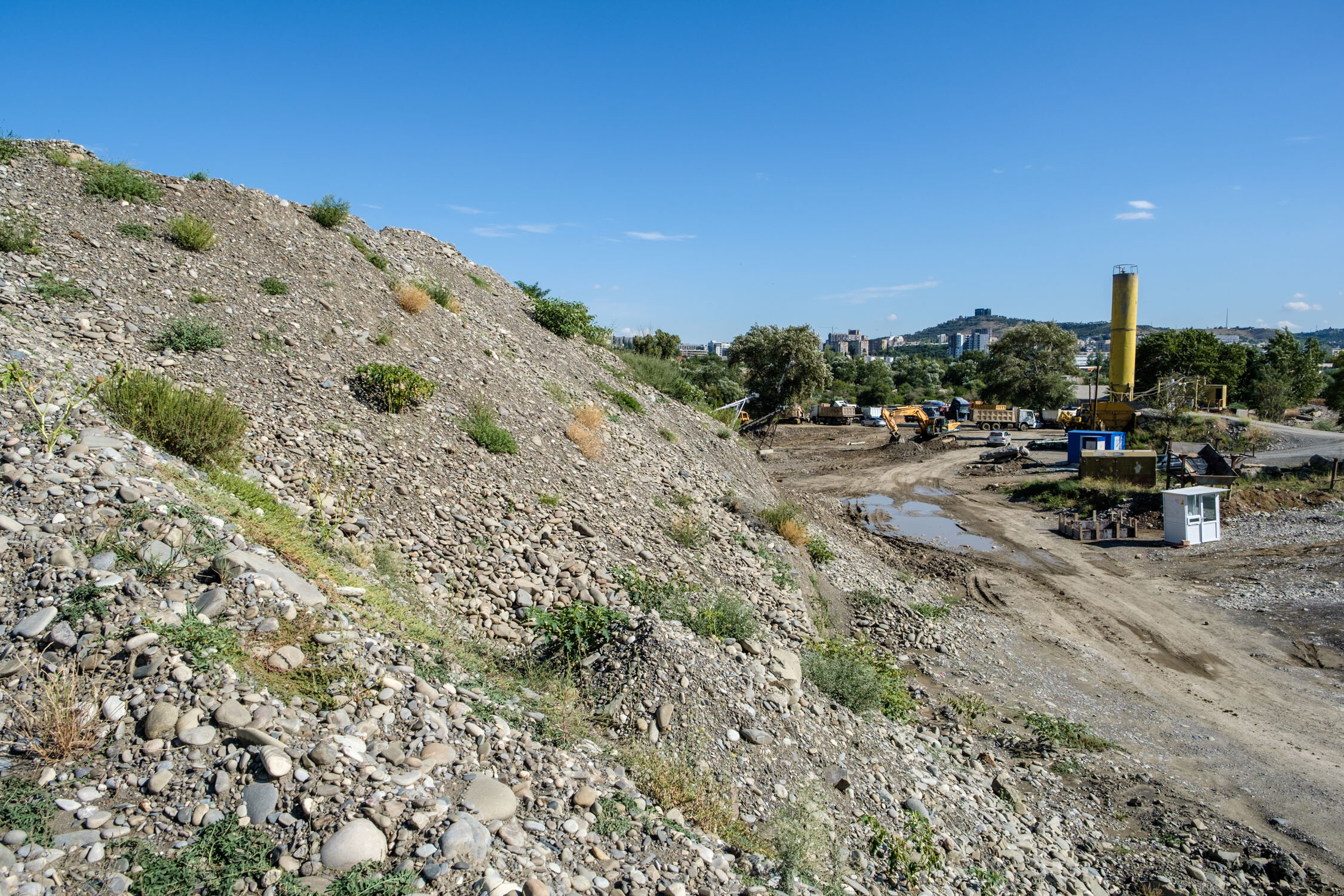THE TRAGEDY OF DIGHOMI MEADOWS
Dighomi Meadows is the reality of environmental destruction in Georgia: large-scale waste dumping and resource extraction, ignored by authorities, and entirely financially driven. Georgia has placed a high national priority on economic development and the environment suffers as a result, with private industry often freely ignoring rules and regulations.
A truck arriving at Dighomi Meadows to illegally dump construction waste.
Dighomi Meadows was once a lush, beautiful and ostensibly highly protected area of biodiverse meadowland in Tbilisi. This type of meadowland is very uncommon in Georgia, which is largely mountainous. In the past 5 years - but particularly in the last 12 months - the area has been willfully destroyed in the name of short-term profit by private industry, while government agencies and local authorities have turned a blind eye. A small group of local residents have mounted a determined and courageous campaign in the face of intimidation and threats to halt the destruction and assess what, if anything, can be done to save the area.
“Dighomi meadows used to be a natural riparian area, a wildlife oasis in the capital city and an important territory for the birds. Now there is just a little patch of “wilderness” left there. Restoring this territory to its natural state (if possible) would, on one hand, create an important habitat for birds and small animals and on the other hand, create a wonderful recreational zone for the people of Tbilisi. It is rare to have such natural areas in big cities, therefore this opportunity should be taken by Tbilisi City Hall.”
Above are various flora and fauna still found at Dighomi and the surrounding area. Many of them are protected, including the frog (Pelophylax ridibundus) and the turtle (Emys orbicularis). Downstream in the middle of the Mtkvari river is also an otter sanctuary. They are potentially at risk from the hazardous materials - particularly heavy metals - that have ended up in the soil and river.
A fisherman on the banks of the otter sanctuary in the Mtkvari River.
Click left and right on galleries below to scroll through.
Two parallel operations have been running on the land:
The extraction of unique lake-bed rock which is then ground down and used for construction materials. The enormous piles of rock in the photos below - which are higher than the tree line, and estimated by activists to be worth around US $3 million - are made up of this extracted rock. The machinery set up near it is used to process it.
The dumping of colossal amounts of construction waste from across Tbilisi into the spaces left by the extracted rock, the remaining lakes and the river Mtkvari itself. In doing so, construction firms avoid taking material to the official Tbilisi dump site, which saves them a lot of time and money, as Dighomi is much closer and has no per-truck fee. The dumped materials have included heavy metals, hazardous chemicals and carcinogenic dusts. The activists estimate at the peak of the dumping, several hundred trucks were arriving per day.
Alongside this, deforestation of the area is estimated by activists to be at around 70%. The site workers have left enough of a forest screen that the destruction is not visible without actually entering the area.
“No permit or license has been issued for Dighomi Meadows, making all of these activities unauthorized and illegal. Furthermore, the negligence and indifferent attitudes of law-enforcement and government entities - who have entirely failed to prevent or investigate this large-scale criminal activity - are indicative of high-level corruption.”
The meadows are a 4.5km strip of municipal land in North Tbilisi on the banks of the Mtkvari River, which flows South-East through the city. Historically, it was a rich and biodiverse area supporting a large range of flora and fauna, including rivers otters and various species of birds which are not commonly found in the region. The lakes also functioned as a flood plain and overflow for the Mtkvari river, which occasionally spills its banks. Unfortunately, with many of the lakes now filled in by construction waste, activists are deeply concerned that the overflow function has been impaired. Likewise, the biodiversity of the area has been largely destroyed.
In the satellite photos below, the scale of destruction of the area is very clear. Additionally, the quality of the meadowland remaining has been hugely degraded by the volume of dust thrown up by the extraction and dumping.
Click left and right on the gallery below to compare 2010 & 2020
In 2015, much of the adjacent area was developed into the olympic park visible in the photos above. With this development came a government promise of the sustainable development of Dighomi Meadows into a recreational space and urban park. Successive authorities have promised the same. Yet these promises are, thus far, hollow.
The activists opposing the destruction of Dighomi Meadows are local residents who have watched the near-total destruction of a vital green space and vowed to hold the perpetrators accountable, movitated by environmental conscientiousness and a keen interest in their children’s futures. In the course of trying to stop the destruction, they have been threatened, intimidated, followed home, been offered bribes, and even believe their phones have been tapped. Despite this, they have maintained a steady output of social media coverage while being stonewalled by every relevant government agency including the environmental ministry.
On the ground activism has proven to be the most effective way for the activists to stop the destruction. Ana and her husband Tornike spent months visiting the site several times a week, which stopped the trucks for a day or so each time. In the course of these visits they were intimidated and threatened by the workers at the rock piles; they angrily confronted them and accused them of being paid by foreign forces, or drove closely past them at speed as they walked around the site. To counteract the danger, they livestreamed the entirety of each visit to the followers of their Facebook page (www.facebook.com/Dighomimeadows).
In recent months their campaign has begun to bear some fruit; after fresh complaints to authorities and television interviews on the public broadcast network, the dumping has stopped, at least for now. The collection and sale of the already extracted stone, however, has only accelerated, and once it is sold it will be unable to be used to refill and rebuild the ravaged land. Now their efforts are set toward halting the sale of the stone, holding accountable the persons involved with the decimation of a vital environmental zone, and commisioning an inquiry into whether any of the meadowland can be saved. To this end, they have received a substantial grant from the Open Society Foundation, and have launched several legal challenges. Yet while this happens, over half of the collected stone has already disappeared. Without urgent action, there will be little of Dighomi left to save.
Above you can see a channel cut in recent months between the river and the extraction machinery to speed up the rock processing and extraction process.
2024 update
As of March 2024, the construction equipment and infrastructure in Dighomi has been removed or destroyed by the government. This is a huge step in the right direction and a direct testament to the power of community action and the value of engaged civil society actors. Nonetheless, a lot of work remains in terms of legal challenges, holding the people responsible for the destruction of Dighomi to account, and one day, rehabilitating the area. Your support is still vital in making this happen.
Want to help save Dighomi?
Contact the activists and get involved! Legal challenges are underway, on-the ground activism is ongoing, and any support is invaluable.
Contact them at www.facebook.com/Dighomimeadows
“What struck me was this great damage that I saw happening to the place. I saw the wildlife and the wetlands that have developed there by themselves... and they are dumping cement, and all these building materials and toxic materials.”
Special thanks to Ana Trapaidze, Tornike Mchedlishvili, Mariam Maghradze, Sandro Kolbaia, Ryan Sherman and Anano Tsintsabadze for their help on this project.

